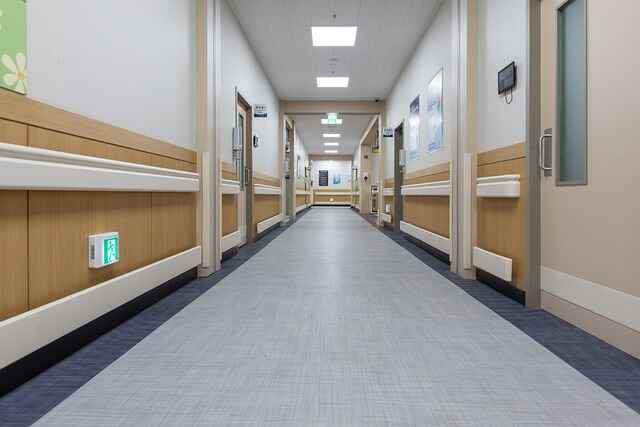The global healthcare sector remains buoyant and is expected to grow despite a challenging economic outlook, according to global property advisor, Knight Frank.
Investors remain confident in the long-term opportunities presented by the sector, with investment in care related real estate reaching c. $38 billion in the year to June 2023, accounting for 4.3% of total global real estate investments.
This comes as the global population shifts rapidly towards an ageing demographic, which is anticipated to drive demand for elderly care beds, particularly for full-time nursing care delivered in specialised facilities. Investors have seized upon this trend, with North American capital contributing almost 68% of the funds deployed in the past year, while France and Belgium attracted the highest levels of cross-border investments.
Among different buyer types, private capital emerged as the most active purchaser overall. However, when considering net purchases, cross-border investors, institutions, and REITs were the dominant net buyers. Key players in this market include companies such as Healthcare Realty Trust, Welltower, and Aedifica.
In the Eurozone, the population aged 75 and over is expected to grow by 26% in the next decade. Investors have been quick to capitalize on the continent’s rapidly ageing population, with one of this year’s most significant acquisitions in the region involving BNP Paribas REIM purchasing a portfolio in Flanders, valued at €100 million.
In the UK, supply of senior living facilities remains low. Increasing wealth within the growing over-65 segment of the population is resulting in more informed housing and lifestyle choices. Yet the delivery of age-appropriate housing for seniors continues to lag potential need. Just 8,000 new seniors housing units were built in 2022 across 145 schemes.
The Asia Pacific region saw acquisitions of operating assets in the senior living sector reaching a record high in 2022. The most affluent segment of the population in Asia Pacific are seniors and older professionals aged over 45. According to Knight Frank’s Wealth Sizing Model, the number of High Net Worth Individuals in APAC is projected to grow by nearly 80% over the next five years. This growth rate surpasses the global average of 56.9%.
As these interrelated trends continue, the proportion of seniors within the consumer class is expected to increase rapidly, and their role in the economy will become increasingly significant. Ageing Asia forecasts that the market value of Asia Pacific’s ageing population will reach US$4.6 trillion by 2025. This will create robust demand for senior housing in several of the region’s developed markets, in turn opening up substantial real estate opportunities to build homes that facilitate successful ageing for seniors.
Recognizing the potential of APAC’s ageing demographic, the private sector is actively exploring opportunities in response. Acquisitions of operating assets in the APAC care sectors reached a record high of US$2.8 billion in 2022.
The Middle East has also experienced substantial sectoral growth in recent years, in part attributed to increased government spending on healthcare infrastructure, particularly in countries like UAE and Saudi Arabia. It is projected that healthcare expenditure in the GCC (Gulf Cooperation Council) will reach a total of USD $135.5 billion by the year 2027. This growth is expected to occur at an annual rate of 5.4% starting from the year 2022.
Characterized by large-scale population growth, and an increasingly ageing demographic, Africa’s healthcare market is undergoing major transformation, and is projected to be worth $259 billion by 2030, offering substantial investment prospects, particularly in relation to infrastructure development and workforce training. By the same year, Africa is expected to present 14% of health and wellbeing business opportunities, only second to North America with 21% of the opportunities. Although the continent accounts for approximately 17% of the world’s population, it accounts for 25% of the world’s disease burden. This will be further affected by Africa’s population growth which is expected to nearly double to reach 2.5 billion people by 2050, resulting in significant demand for healthcare facilities.
The North American market faces a similar predicament, with more than 60.7 million Americans over age 65, a number that is expected to increase to nearly 70 million in five years, reflecting an annual growth rate of 3%. Over the past few years, the American healthcare industry has experienced an average of 8% rate growth across all care types, with some markets reaching more than10% growth. In addition to rate growth, operators have also been successful in increasing care fees for assisted living and memory care.
Julian Evans, Partner and Head of Healthcare at Knight Frank said: “Broad in its coverage, the case for investment in the healthcare sector remains consistent not only across its various subsectors but also across geographic borders. Supported by an ageing population across the globe and shifting demographic trends, the healthcare sector is seeing increased demand for long-term care facilities. Furthermore, as private equity, REITS and institutional investors continue to chase the strong, long income generated, there is growing interest in healthcare’s capabilities to aid ESG investing strategies.”
Ryan Richards, Associate at Knight Frank said: “Ageing demographics and a growing need for long term care facilities prove to be key factors in the interest seen across global healthcare real estate. The supply and demand statistics that follow on from this scenario create a sound case for the sector, whereby we need to see an increase in what is considered fit for purpose or future proofed bed space.”
Click here to receive CRE Herald’s weekly newsletter, news alerts and insights!





















